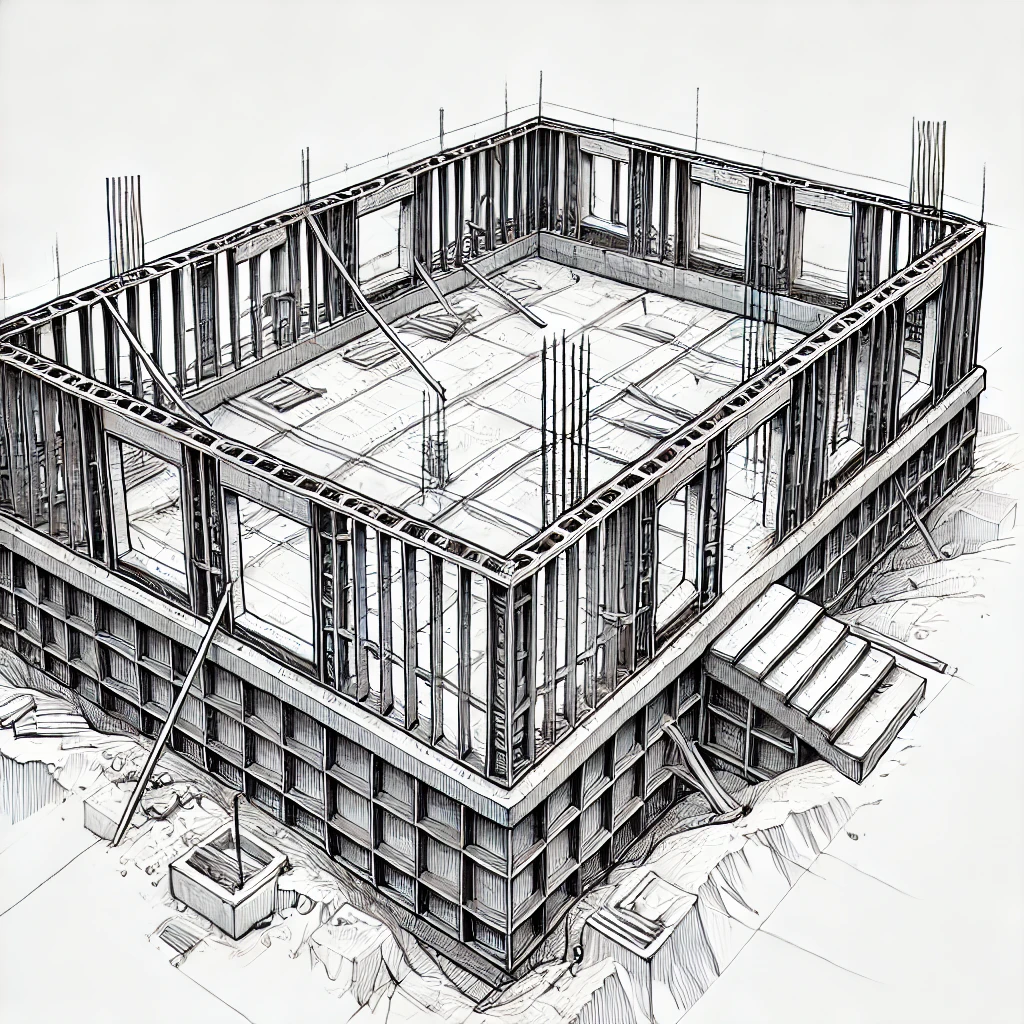The foundation is a critical component of an ADU, and it’s what keeps the structure stable and secure.
Let’s dive into the different types of foundations and what you need to know.
Always speak to your planner and builder for advice on selecting an ADU foundation, as they will have the expertise and knowledge in your location to advise on the correct type.
Why the Right ADU Foundation Matters
The foundation is the bedrock of your ADU.
It directly impacts the longevity, stability, and overall success of your project.
Choosing the correct foundation type depends on your site conditions, budget, and the specific needs of your ADU.
Types of ADU Foundations
Let’s explore the different types of ADU foundations to see how they compare.
Slab-on-Grade Foundation
A slab-on-grade foundation involves pouring concrete directly onto the ground.
This type is common for flat lots and offers a solid, durable base. It’s an economical choice and works well in warmer climates where ground freezing isn’t a concern.
Pros:
- Cost-effective
- Quick to install
- Low maintenance
It does have some downsides, though, and isn’t suitable for every environment.
Cons:
- Limited insulation options
- Not suitable for areas with freezing conditions
Overall, a slab-on-grade is a great option for an ADU as it can be very affordable, especially given how small ADUs tend to be.
Crawl Space Foundation
A crawl space foundation elevates the ADU slightly above the ground, creating a small space underneath.
This type is useful in areas prone to flooding or with uneven terrain. It also provides easy access to plumbing and electrical systems.
Pros:
- Better protection against moisture
- Easier access for repairs
- Suitable for sloped or uneven lots
Crawl space foundation does come with some drawbacks though:
Cons:
- Can be more expensive
- Requires ventilation to prevent moisture buildup
- Typically leaves around 6 feet of basement height
A crawl space foundation might be the right choice, but you need to plan out your basement space (if there is one).
Variations
Slab-on-grade and crawl space foundations may need deepened footings or stem walls to shape them to the surroundings and provide support.
This is done on the basis of the advice of a structural engineer.
Basement Foundation
A basement foundation involves excavating beneath the ADU to create an additional living or storage space.
This type of foundation is ideal for maximizing space, especially on smaller lots.
Pros:
- Adds extra living or storage space
- Great for colder climates
- Increases property value
The downsides to basement foundations are mostly in cost:
Cons:
- Most expensive option
- Longer construction time
- Requires waterproofing
Basements can be expensive to maintain as well, but if built properly the this shouldn’t be an issue.
Pier and Beam Foundation
Pier and beam foundations involve placing the ADU on piers anchored deep into the ground with beams supporting the structure above.
This method is effective for uneven or challenging terrains.
Pros:
- Ideal for sloped lots
- Easy access for utilities
- Provides ventilation under the ADU
The downsides of pier and beam lie in the lower weight capacity and maintenance issues.
Cons:
- Can be prone to shifting in certain soils
- Requires more maintenance
- Not as much support as a concrete foundation
Even though this type of foundation has a lower capacity, it should be able to support an ADU in many cases, and your builder/architect will determine this with the help of a structural engineer.
Factors to Consider When Choosing a Foundation
Not every type of foundation will work for every ADU project, and there are several things to keep in mind when choosing the right type for your build.
Soil Conditions
The type of soil on your property can greatly influence your foundation choice.
For example, clay-rich soils may require deeper foundations to avoid shifting.
Climate
In colder climates, foundations need to be deep enough to avoid frost heaving.
Slab-on-grade may not be suitable in these areas, whereas basement or pier foundations are better options.
Cost and Budget
Different foundations come with varying costs.
Slab-on-grade is generally the most affordable (usually $6 to $12 per square foot), while basements are more expensive but add value to your property.
Local Building Codes
Ensure your foundation choice complies with local building codes and regulations. This step is crucial to avoid legal complications down the line.
Last But Not Least
Choosing the right foundation is crucial to the success of your ADU.
Whether you opt for a slab-on-grade, crawl space, basement, or pier and beam foundation, each type offers unique benefits and challenges.
Consider your specific site conditions, budget, and future needs to make an informed decision. Always consult with a professional to get advice on the best foundation type for your ADU.
- Slab-on-grade: Best for flat lots and warmer climates.
- Crawl space: Ideal for sloped lots and areas prone to moisture.
- Basement: Provides extra space and is suitable for colder climates.
Pier and beam: Great for uneven terrain and offers easy access for utilities.
